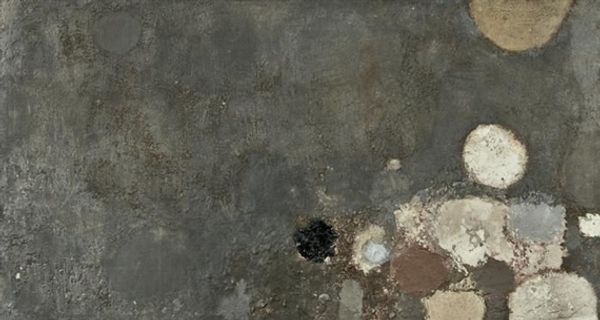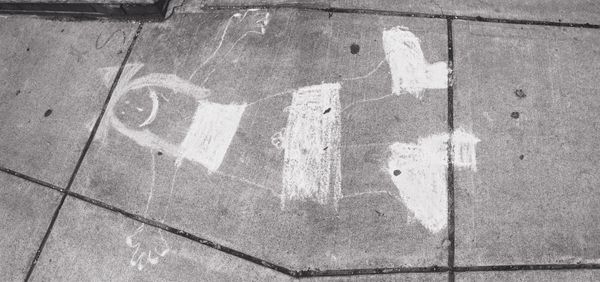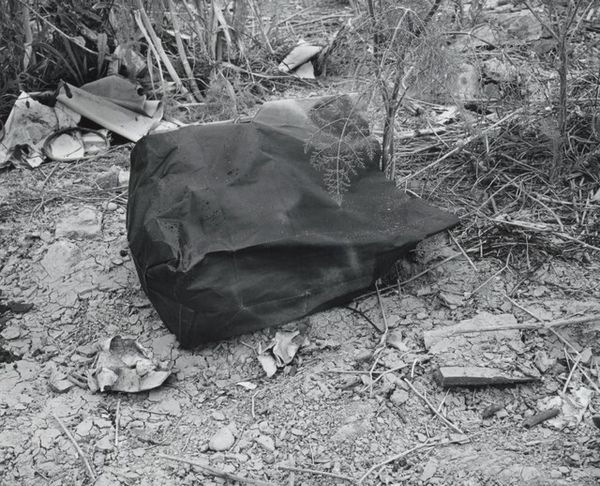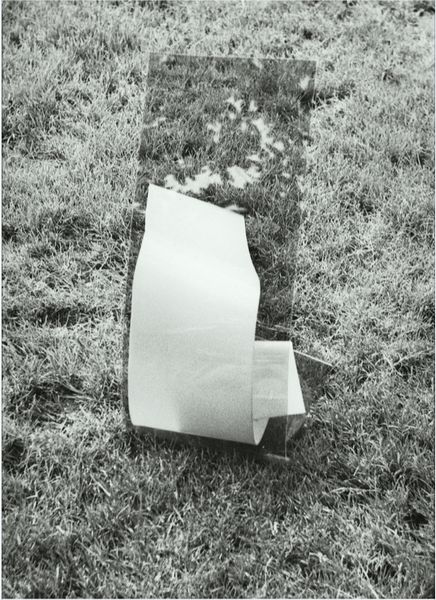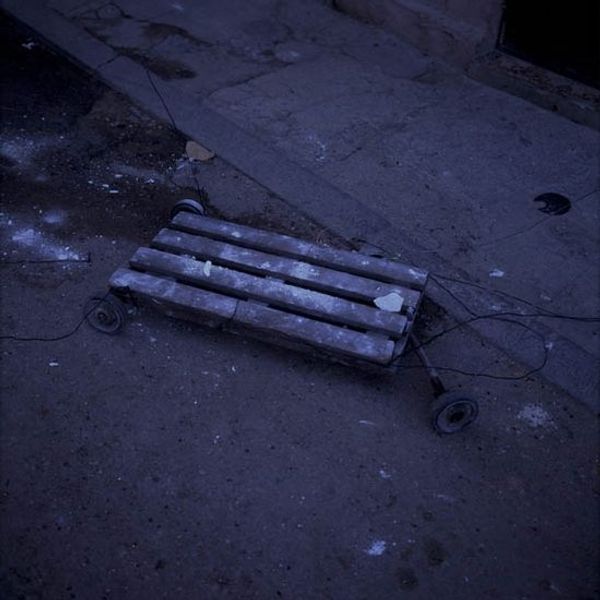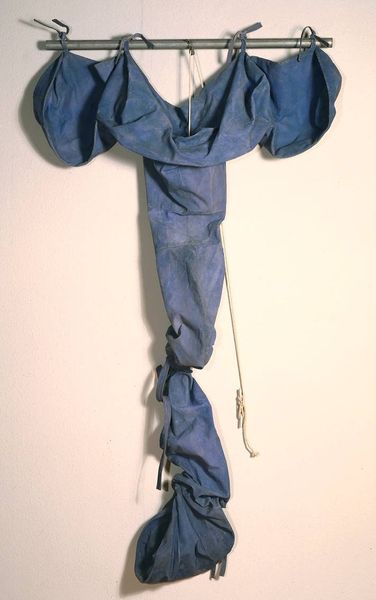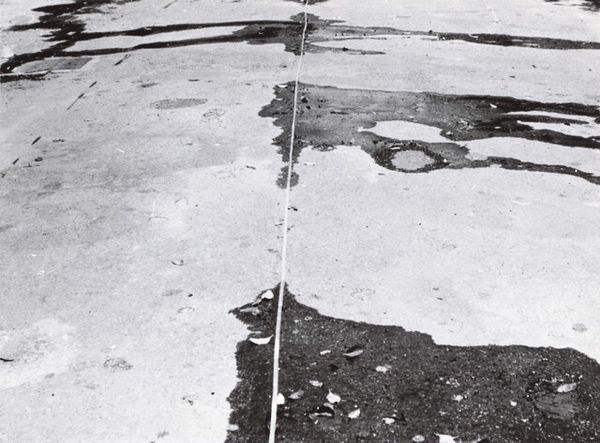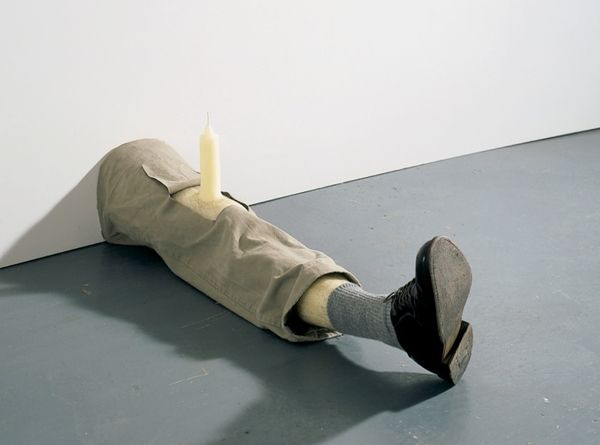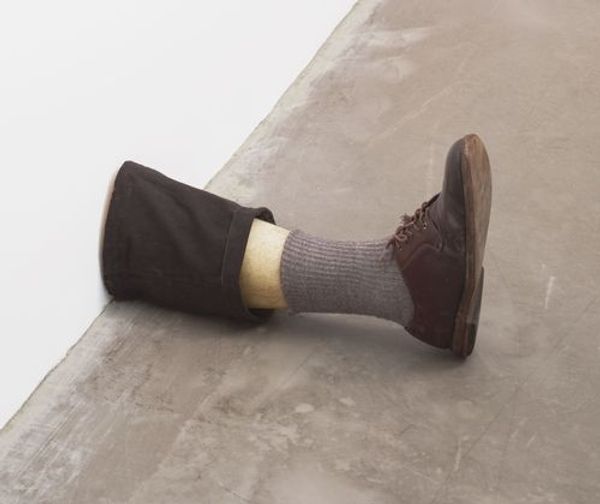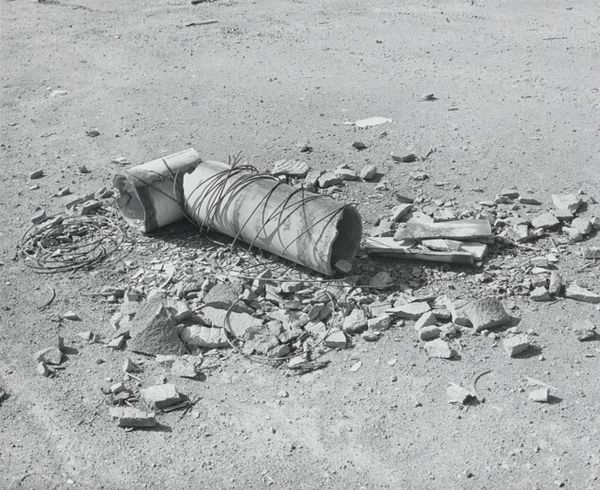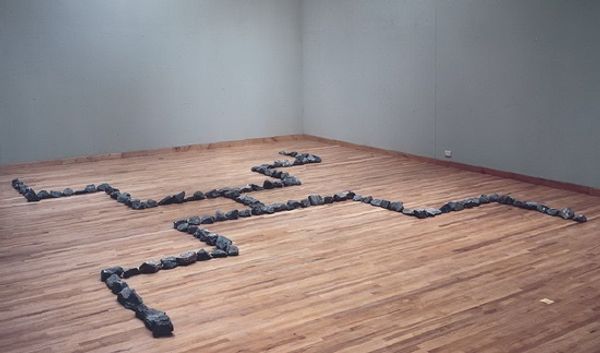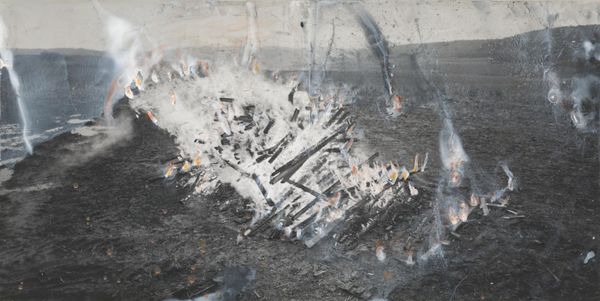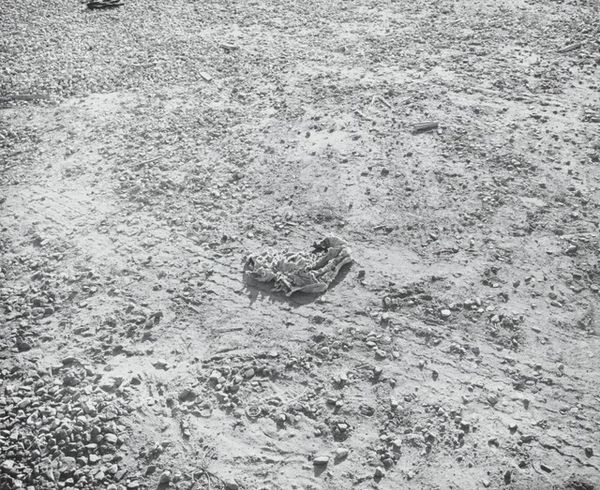
found-object, public-art, ephemeral-art, site-specific, installation-art
#
public art
#
conceptual-art
#
street art
#
found-object
#
public-art
#
ephemeral-art
#
geometric
#
site-specific
#
installation-art
Copyright: Ayse Erkmen,Fair Use
Curator: Looking at Ayse Erkmen’s 1981 installation, titled "100 Stones," what strikes you? Editor: An immediate impression of geometric repetition, though softened by the randomness of the stones. Each stone's stark materiality stands out against the flat plane. It's minimalist yet playful in composition. Curator: Indeed. Erkmen created this work using found objects – specifically, stones collected from the site and then carefully adorned with colorful tape. As a site-specific and ephemeral intervention, this piece really interrogates our relationship with the everyday and challenges notions around value and artistic labor. Editor: The choice to use common materials arranged precisely emphasizes texture and contrast between colors and medium. This invites a formal consideration of the interplay of light and shadow across both the stones' surface and placement of lines within the site. What meanings can be read from this installation through form alone? Curator: Well, if you consider the period during which "100 Stones" was realized, Turkey was experiencing intense political turmoil, and artistic expression was heavily monitored. The act of collecting these ordinary stones, transforming them, and then returning them to the public space without permission can be interpreted as a quiet act of rebellion. Erkmen highlights how simple materials – the stones, the tape – can become instruments for communicating dissent within larger sociopolitical landscapes. Editor: I see that tension now, yes, I'm getting a push-pull that brings form and meaning. It provokes thought around imposed structures contrasted against elements of nature, so by changing one aspect within this interplay something completely different rises between found versus designed environments too. Curator: I agree that these stones become little beacons within a rigid landscape that alter public experience in subtle ways—a reminder to pay attention to the unnoticed elements. It's a testament to the artist's commitment to place and engaging viewers in a deeper exploration with mundane environments and its inhabitants. Editor: In a way, it re-defines our idea about beauty.
Comments
No comments
Be the first to comment and join the conversation on the ultimate creative platform.

